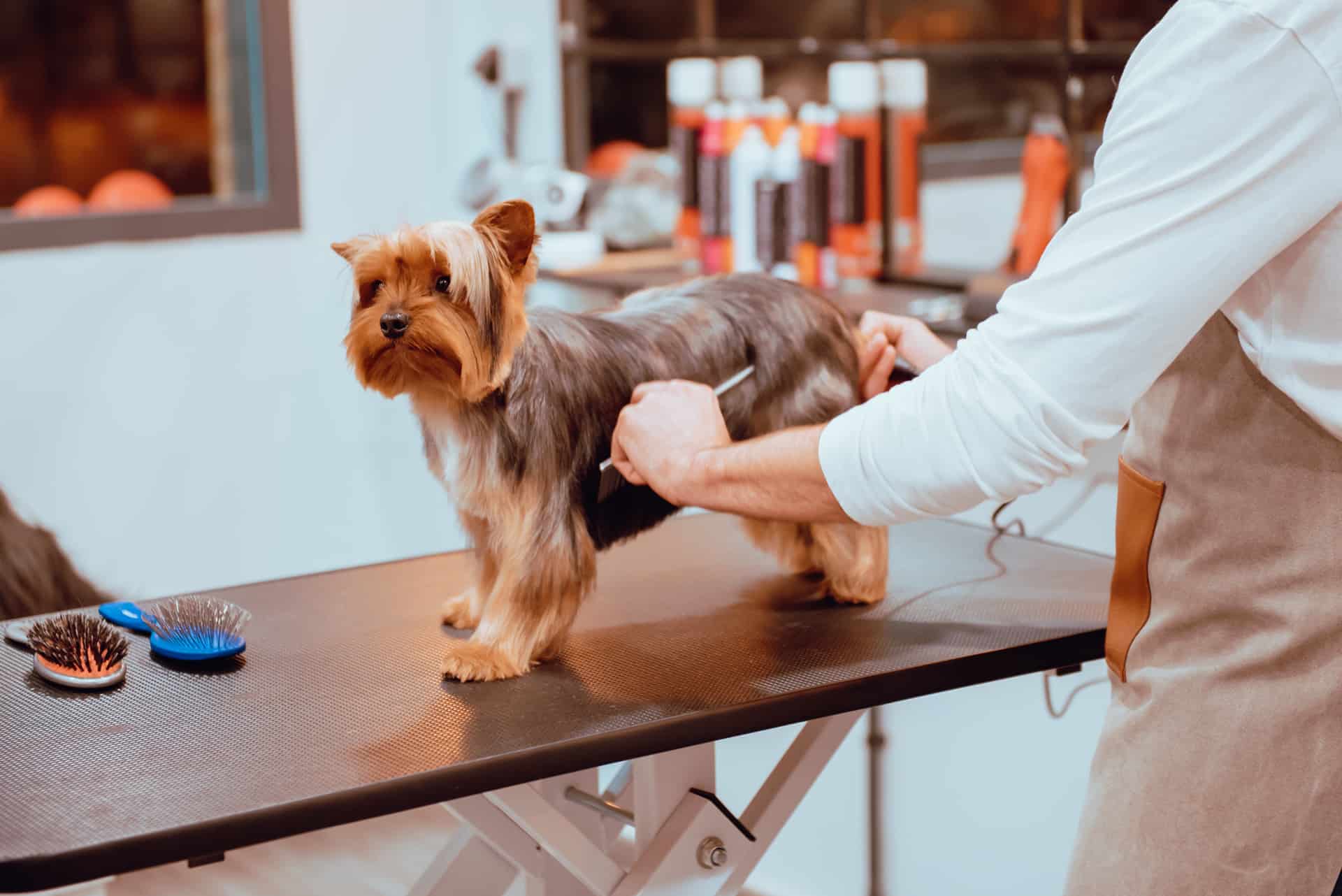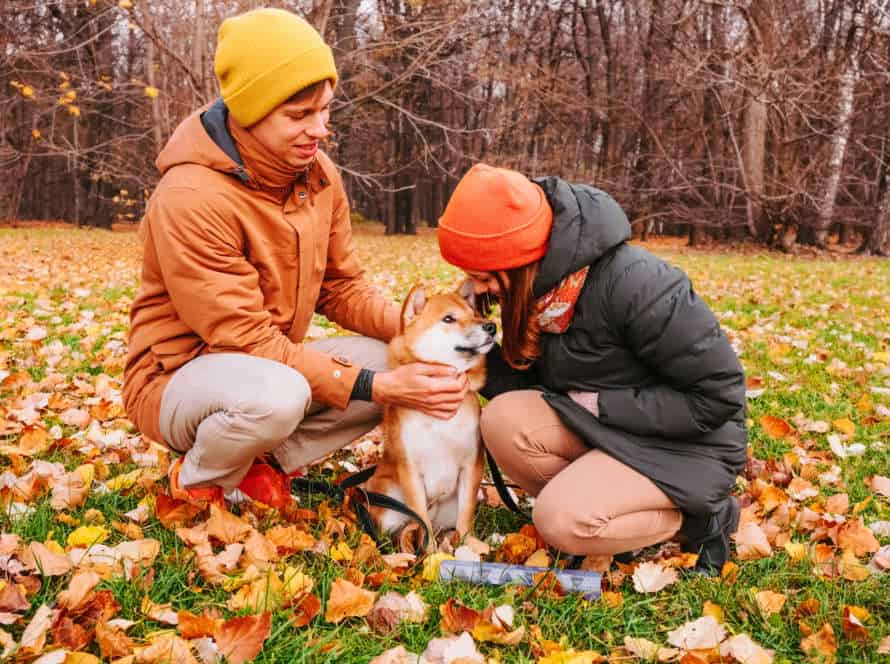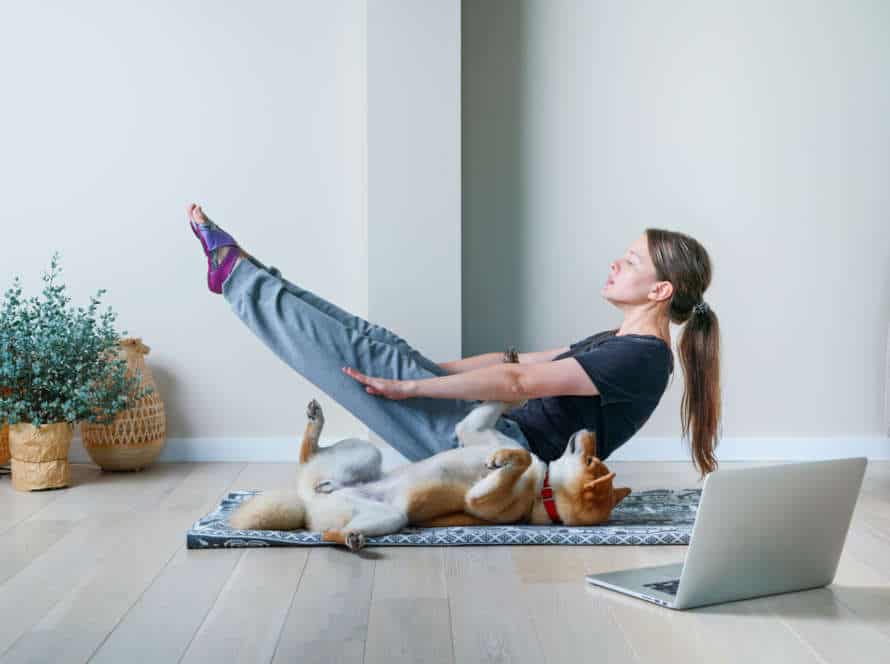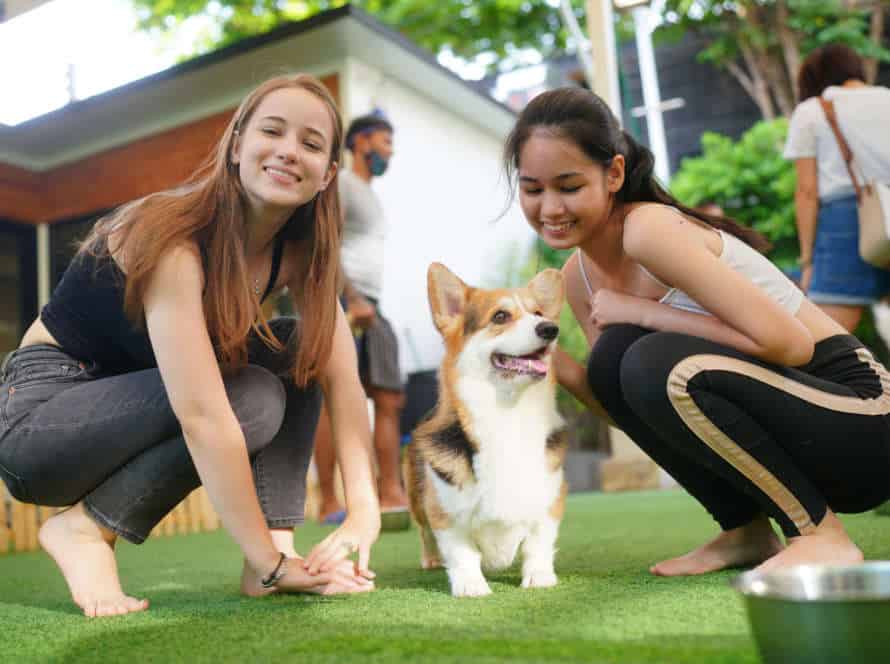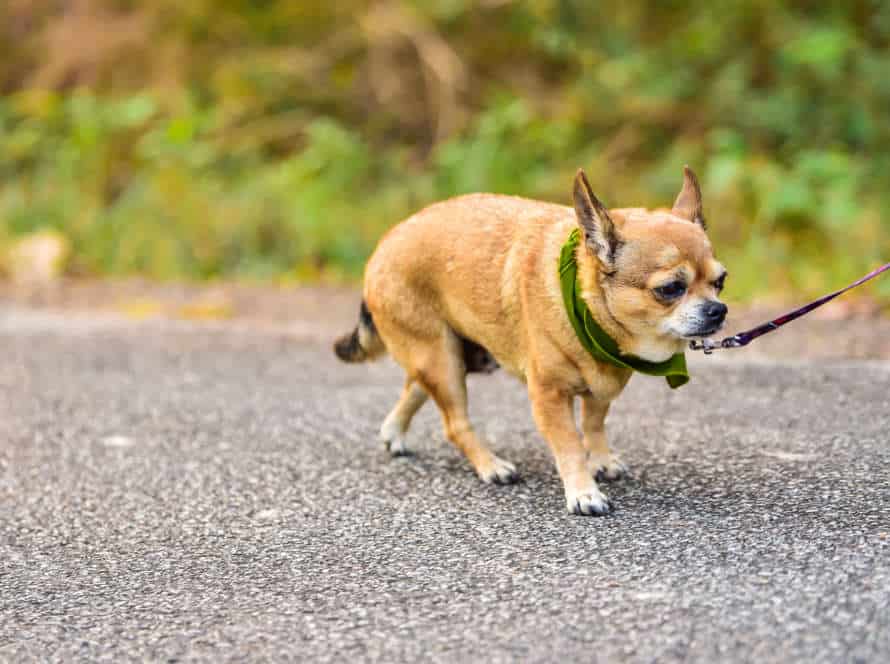Top Dog Grooming Techniques: Tips for a Well-Groomed Pet
As a pet owner, it’s essential to keep your pup groomed. Here are some top tips:
- Brush your dog’s coat often. Use a slicker brush for long-haired breeds and a bristle brush for short-haired ones.
- Trim your pup’s nails every 2-3 weeks. Avoid painful overgrowth and ensure proper foot placement.
- Clean your dog’s ears each month with a cotton ball and ear-cleaning solution. Prevent ear infections.
- Bathe your dog every 2-6 weeks. Use a dog shampoo and conditioner for a healthy and shiny coat.
- Brush your pup’s teeth daily. Use a dog-specific toothbrush and toothpaste. Say bye to bad breath and dental problems.
These techniques will help your pet look and feel their best.
Preparing for Grooming Your Dog
Groom your pup for a worthwhile experience! Get the supplies needed and follow these few steps. Firstly, create a secure and cozy area for your dog. Then, have a look at these tips for prepping your pup for grooming:
- Make sure your dog is calm and relaxed before you begin grooming.
- Give your dog a quick brush through to remove any tangles or mats.
- Trim your dog’s nails carefully to avoid causing any pain or discomfort.
- Clean your dog’s ears with a gentle cleanser and cotton rounds.
- Bathe your dog using a dog-specific shampoo, making sure to avoid getting any soap in their eyes or mouth.
Have the Right Grooming Tools
Grooming your pup is easy, efficient, and fun when you have the right tools. Here are some must-haves:
- Brushes: Slicker for fur and mats, a pin brush for longer hair or sensitive skin.
- Nail clippers: Get a good quality for safe and easy trimming.
- Stainless steel comb: Use it to remove loose fur and debris from around the face and ears.
- Shampoo and conditioner: Buy high-quality, dog-specific ones that fit your pup’s skin and coat type.
- Ear cleaning solution: Go for gentle to clean ears and prevent infections.
Proper grooming tools make the process efficient and help your pet stay healthy.
Choose a Safe and Quiet Place for Grooming
Choosing a calm spot for your pup’s grooming is essential for a good experience! Here are some tips:
- Pick a non-slip area.
- Make sure it’s quiet and free of distractions.
- Good light is a must.
- Have grooming supplies within reach.
- For nervous pups, use a diffuser with calming scents.
This way you can set up a relaxed environment for grooming – enjoyable for both you and your pup!
Make Sure Your Dog is Calm and Ready
Before grooming, it’s important to make sure your dog is relaxed. This will benefit both of you! Here are five tips to get your pup ready:
- Go for a walk or play – this’ll tire them out.
- Introduce them to the tools and area slowly.
- Offer rewards and compliments during the process.
- Begin with the simplest task, like brushing or cutting nails.
- Give them time to move, stretch, and take breaks.
Grooming is an important part of pet care. It can even help strengthen your bond. If your dog is prepared and calm, the experience will be great!
Brushing Your Dog
Brushing is key to keeping your pooch healthy and groomed! It gets rid of dirt and old fur, which keeps mats and tangles away. Plus, it lets you check for fleas or any skin issues. Make sure to brush your pup’s coat at least weekly for optimal results.
The Importance of Regular Brushing
Brushing your pup regularly is essential to their grooming! Here are a few reasons why:
- Removing dead hair and debris stops skin irritation and fur tangling.
- Boosts circulation and spreads natural oils, making the coat and skin healthier and glossy.
- Helps detect any lumps, bumps, skin irritation signs, or parasites.
- Gives you a chance to bond with your furry pal.
Tip: Try different brushes and combs to find the right ones for your dog’s fur length and type. Make grooming fun with treats and words of encouragement!
Choosing the Right Brush for Your Dog’s Coat Type
Selecting the ideal brush for your pup’s coat type is vital for keeping their fur healthy, clean and glossy. Various brushes are available, each with its own benefits, depending on your pooch’s coat type.
- Slicker brush: This brush is best for long and curly-haired dogs, such as Poodles, Goldens and Cocker Spaniels. Slicker brushes can help remove mats and tangles, and distribute natural oils throughout their coat.
- Bristle brush: Bristle brushes are ideal for short haired breeds like Beagles, Bulldogs and Dobermans. These can help remove dirt, debris and loose fur, and also stimulate their skin and encourage healthy hair growth.
- Undercoat rake: This type of brush is perfect for thick double coats like Huskies, Samoyeds, and Malamutes. An undercoat rake can help to remove loose fur from the undercoat, preventing matting and tangling.
- Rubber brush: Rubber brushes are best for pooches with sensitive skin, such as Boxers, Dalmatians and Great Danes. They can assist in clearing away dirt and fur, and also massage the skin, promoting hair growth and oil production.
Remember to opt for a brush that is suitable for your canine’s coat type and introduce grooming gradually, in short sessions, to make it a positive experience.
Pro tip: Regular grooming with the appropriate brush can help prevent matting, tangles, and skin irritations, while strengthening the bond between you and your pet.
Brushing Techniques for Different Coat Types
Regularly brushing your pup is a must for their grooming routine. It helps avoid matting, skin irritation, and keeps their coat healthy and glossy. Different breeds have different coat types, so brushing techniques must be adjusted. Here are some techniques for various coat types:
- Short-haired coat: Start with a rubber brush. Get rid of dead fur and dirt. Then use a bristle brush to spread oils and give a shiny finish.
- Long-haired coat: Use a slicker brush to get rid of tangles. Then use a metal comb for any remaining knots.
- Double coat: An undercoat rake should be used to remove loose fur from the thick undercoat. Then use a pin brush to remove tangles and give a smooth result.
- Wire-haired coat: Slicker brush to remove mats and loose fur. Then use a bristle brush to spread oils and detangle.
Pro tip: Start brushing your pup early. Make it a positive experience with treats and praise.
Bathing Your Dog
Bathing your fur baby is essential for hygiene and health! Get the right shampoo for your pup and utilize the correct bathing techniques. Here are some tips for bathing your dog and the necessary steps for proper grooming. Make sure your pooch is pampered!
Preparing Your Dog for a Bath
Getting your pup ready for a bath is key to having a peaceful time for both of you. Follow these steps for a successful bathing session:
- Brush their fur to remove knots and mats before getting them wet.
- Place a rubber mat in the bathtub or sink, so they don’t slip.
- Wet their coat with lukewarm water, avoiding their face and ears.
- Apply a shampoo for dogs, massage it into their skin, but stay away from their eyes and ears.
- Rinse off the shampoo with lukewarm water.
- Dry them off with a clean towel, rubbing gently to get rid of any extra water.
- Give your pup treats and praise for doing a great job!
Choosing the Right Shampoo for Your Dog
Finding the right shampoo for your pooch can be overwhelming with all the options. But, by considering your dog’s skin and coat type, you can choose the perfect shampoo that keeps your pup clean, healthy, and smelling fresh.
For dry skinned pups, oatmeal-based shampoos are the way to go as they soothe and moisturize. And if your pup has oily skin, tea tree oil or citrus-based shampoos help reduce oil and dander.
Here are some tips when selecting a shampoo for your dog:
- Stay away from harsh ingredients like sulfates, parabens, artificial colors and fragrances as these can irritate.
- Use shampoos made for dogs – human shampoos upset a pet’s natural skin pH balance.
- If your pup has any allergies or skin conditions, chat with your vet before selecting a shampoo.
- Rinse thoroughly and dry off completely to avoid skin irritation.
Choose the right shampoo and grooming techniques, and your furry friend will look and feel their best.
Bathing Techniques for a Clean and Healthy Coat
Bathing your pup is essential for good hygiene and health. Try these techniques for a clean and healthy coat:
- Use lukewarm water to wet their coat, avoiding the face and ears.
- Apply a dog-specific shampoo. Massage it onto the skin while lathering. Make sure to rinse it all off.
- Then, conditioner to remove any remaining shampoo and promote blood circulation. Massage it into the skin for a few minutes then rinse it off.
- Squeeze out excess water and wrap them in a towel.
- Air dry them or use a low-heat blow dryer.
- Don’t forget to trim their nails, clean their ears, and brush their teeth regularly. That’s part of a good grooming routine.
Trimming Your Dog’s Nails
Grooming your pet’s nails is very important. If you don’t keep them trimmed, they can become too long and cause your furry pal pain and discomfort. Cutting your dog’s nails regularly can stop infections and health issues, plus make him look spectacular!
Let’s talk about why trimming your pet’s nails is key and how to do it right.
The Importance of Trimming Your Dog’s Nails
Trimming your pup’s nails is key in pet grooming. Long nails can make them unwell and unhappy. Dogs with overgrown nails may feel pain and difficulty when moving. Here are some reasons why you should keep their nails trimmed:
- Preventing breakage and injury to the nail bed
- Giving them good posture and movements
- Stopping discomfort and pain when they walk or run
- Minimizing snagging and tearing of stuff in your home
- Preventing unintentional scratches to you or others
To make sure your dog’s nail trimming is safe and successful, use the correct tools, check for bleeding or pain, and give positive reinforcement during the process.
Choosing the Right Clippers
Choosing the right clippers for trimming your pup’s nails is vital. It’ll guarantee a safe and successful grooming experience for both you and your furry companion.
Two main types of doggy nail clippers exist: guillotine and scissor. Guillotine clippers are like a hole punch. You place the nail in the small hole and a blade slices through. Scissor clippers work like regular scissors. Place the nail between the blades and squeeze to cut.
When selecting clippers, think about your dog’s size and nail thickness. Guillotine clippers are perfect for small to medium-sized dogs with thin nails. And scissor clippers are better for larger dogs with thicker nails.
It’s key to pick high-quality, sharp clippers. This will help you avoid crushing the nail and causing discomfort or pain to your pup.
Always have styptic powder or cornstarch handy, just in case of a bleeding accident from cutting the nail too short.
Techniques for Trimming Your Dog’s Nails Safely
Tending to your pup’s nails is an essential part of pet grooming, yet it can be difficult to do it properly. Here are some great tips for trimming your dog’s nails safely:
- Get your dog accustomed to nail clipping by regularly handling their paws.
- Purchase high-quality trimmers designed for dogs the size of your pet.
- Cut off small bits of the nail to avoid cutting the quick (sensitive part with nerve and blood vessels).
- Smooth out the rough edges and stop nails from splitting with a nail file or grinder.
- Reward your pup with treats and praise to build a positive connection with nail trimming.
- If you cut the quick, apply styptic powder or cornstarch to stop the bleeding.
- If your dog is too skittish or aggressive regarding nail trimming, seek help from a professional groomer or vet.
Cleaning Your Dog’s Teeth
It’s not just about having a pearly white smile! Regular brushing and cleaning of your pup’s teeth is vital for their general health and wellbeing. It helps to keep bacterial infections and germs away, plus it can help to extend their life.
Here are some tips and info about the products out there that can help with your pup’s oral hygiene:
The Importance of Oral Hygiene for Dogs
Humans aren’t the only ones who need good oral hygiene! Dogs need it too, to stay healthy. Regular teeth cleanings & proper dental care can help prevent many health issues in dogs, like bad breath, gum disease, tooth decay, & infections. Here’re some tips to clean your pup’s teeth at home:
- Use a toothbrush & toothpaste made for dogs.
- Gradually introduce dental care, making it a positive experience.
- Be gentle & patient when brushing their teeth, especially around the gums.
- Use dental chews or toys to complement their routine.
- Check their teeth & gums for any signs of discomfort, swelling, or discoloration.
Proper oral hygiene is an essential part of your pup’s care, & can help them live a long & healthy life.
Choosing the Right Toothpaste and Brush
Choosing the right toothbrush and toothpaste is essential for cleaning your dog’s teeth and keeping them healthy. Consider these things when selecting:
Toothbrush:
- Soft bristles.
- Long handle.
- Designed for pets, not humans.
Toothpaste:
- Made for dogs.
- Pet-friendly flavors, such as poultry or beef.
Consult your vet to see if your dog needs a specific type of brush or toothpaste. Brushing regularly, plus a healthy diet, can help prevent gum disease and other dental issues. Pro tip- Clean your dog’s teeth often to avoid dental diseases.
Techniques for Cleaning Your Dog’s Teeth Effectively
It’s a must to clean your pup’s teeth! Doing so will help maintain their oral health & avoid dental problems.
Here are some tips:
- Get your pup used to you touching their face & mouth. Do this by stroking their gums or letting them lick toothpaste off your finger.
- Introduce a special toothbrush & toothpaste for dogs. Brush in circles, starting with the front teeth.
- Use dental wipes or dental chews to remove plaque & keep their teeth clean.
- Reward your pup with treats & praise when done brushing their teeth.
By using these techniques, your dog’s teeth will stay healthy & reduce risk of future health issues.
Frequently Asked Questions
1. How often should I groom my dog?
A: It depends on your dog’s breed and coat type. Dogs with longer hair or thicker coats may need to be groomed more frequently than dogs with shorter hair. Generally, it’s recommended to groom your dog every 4 to 6 weeks.
2. What are some essential tools for dog grooming?
A: Some essential tools for dog grooming include a brush, comb, nail clippers, and scissors. You may also want to invest in a hair dryer, especially if you have a long-haired dog.
3. How can I prevent matting in my dog’s coat?
A: Regular brushing is key to preventing matting in your dog’s coat. You can also trim any areas of the coat that are prone to matting, such as the hair around the ears and paws.
4. Can I bathe my dog too often?
A: Yes, you can. Over-bathing your dog can strip their skin and coat of natural oils, leading to dryness and irritation. Generally, it’s recommended to bathe your dog once every 4 to 6 weeks, or as needed if they get especially dirty or smelly.
5. How can I make nail trimming less stressful for my dog?
A: Start by getting your dog used to having their paws touched and handled. Reward them with treats and praise for allowing you to touch their paws. Then, slowly introduce them to the nail clippers and trim a little bit at a time, rewarding them after each successful trim.
6. Should I take my dog to a professional groomer?
A: It depends on your dog’s specific grooming needs and your own comfort level with grooming. Some dogs may require more specialized grooming than you feel confident doing at home, in which case a professional groomer may be the best option. Additionally, professional groomers can often provide additional services like teeth cleaning and flea treatments.

